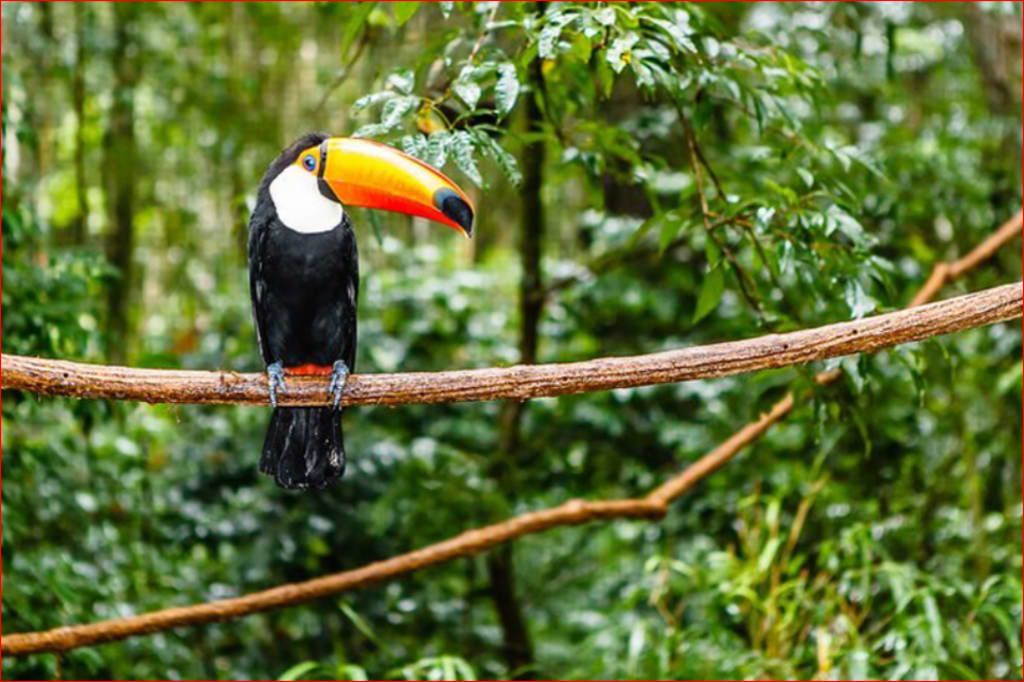Amazon Forest Was not A Jungle
Mysteries of the Amazon Forest that Still Puzzle the Scientists

Did you know the Amazon rainforest houses around 30% of all plant and creature species on the planet? That is tree-mendous. In any case, the historical backdrop of one local animal types has escaped researchers for quite a long time, people. Human existence in the Amazon was expected to have been nothing in excess of a couple of dispersed clans. Nonetheless, continuous deforestation in Brazil's Section of land state, which was for quite some time accepted to be uninhabited, has uncovered enormous, unnatural shapes in the ground known as geoglyphs. While they seem to be minimal more than shallow trenches, they're really the remaining parts of a huge human progress. Across 5,000 square miles there're around 450 markings, with some comparing 1,300 feet wide, damn.
In spite of the fact that there are places in the Amazon where the tree shelter is thick to the point that no light arrives at the ground, there are different places where people (and there are a great deal of them there) are cultivating, farming, and taking part in different exercises that change the scene. Clear-cutting as of late has uncovered proof of land use by prior bunches too: 2000-year-old tremendous mathematical earthworks structure squares and circles that stretch to the extent that a city block. Some channels are 3.5 wide and 4 meters down. Specialists doesn't know what the geoglyphs were utilized for, however a new report in The Procedures of the Public Foundation of Sciences found that old people effectively dealt with the timberland utilizing reasonable practices. "New gauges for the number of inhabitants in Amazonia in pre-pioneer times range somewhere in the range of 6 and 10 million individuals, which is a lot more than today," says Jennifer Watling, an excavator who drove the review. "These individuals had numerous clever approaches to making the woods more useful without harming it for people in the future."
The tremendous symbolic representations likely housed a formal structures of some kind or another, where up to 1,000,000 individuals might have congregated as of late as a long time back. Sacred Guacamole, that is crazy. Also, there's considerably more. These days, because of innovative headways like LiDAR, we can investigate without harming the rainforest. By terminating a tree-safe laser from straight over the reviewing region, a collector estimates the light returning and keeps a 3D guide of the items in the scene. That is so cool, however not so cool as the thing's been stowing away.
In 2019, outputs of the southwestern Amazon bowl revealed miles of raised streets and pathways, and even pyramids over 70ft tall. A surprising 26 individual settlements were found, two of which were no less than 250 sections of land each. That is 330 football pitches, sheesh. The secretive Casarabe individuals lived here for many years and afterward vanished around 1400 Promotion. European conquerors likely drove them out, yet we don't be aware without a doubt. In any case, fabricating a monster wilderness local area in the shrubberies is noteworthy, correct? Hold up, I've recently had an insane thought. Consider it, an enormous gathering of individuals
living respectively could have to develop lots of food and plants, correct?
A wide range of tribes - even those that don't speak with each other - discuss a monster rainforest creature that they portray as by the same token "thundering" or "rank." The records are various to such an extent that scientists have mounted endeavors to attempt to find a 2.1-meters-tall monster with a smell serious areas of strength for so can make trackers dazed and perplexed. Albeit no bones or scat tests have turned up, a few researchers think the portrayals of mapinguary may be founded on passed-down accounts of when people in the Amazon cooperated with the last goliath ground sloths - conceivably a long time back, when the animals are remembered to have become wiped out (or perhaps more as of late, assuming that that date is viewed as off-base). "We realize that terminated species can make due as legends for many years," David Oren, a previous overseer of exploration at the Goeldi Establishment in Belém, Brazil, told The New York Times in 2007. "Be that as it may, regardless of whether such a creature actually exists is another inquiry, one we can't as yet reply."
Indeed, imagine a scenario in which the Amazon wasn't initially a wilderness. Then, after the Casarabe public vanished, their yields grew somewhat wild? It's simply a hypothesis, however a shocking 95% of this green city is as yet neglected. Who knows, perhaps there's something significantly more insane in there.
About the Creator
Frank Schulz
I have an insatiable curiosity for the wonders of science, the depths of history, and the intricate tapestry of human interest subjects. I immerse myself in the captivating worlds of discovery and understanding.
Enjoyed the story? Support the Creator.
Subscribe for free to receive all their stories in your feed. You could also pledge your support or give them a one-off tip, letting them know you appreciate their work.





Comments
Frank Schulz is not accepting comments at the moment
Want to show your support? Send them a one-off tip.